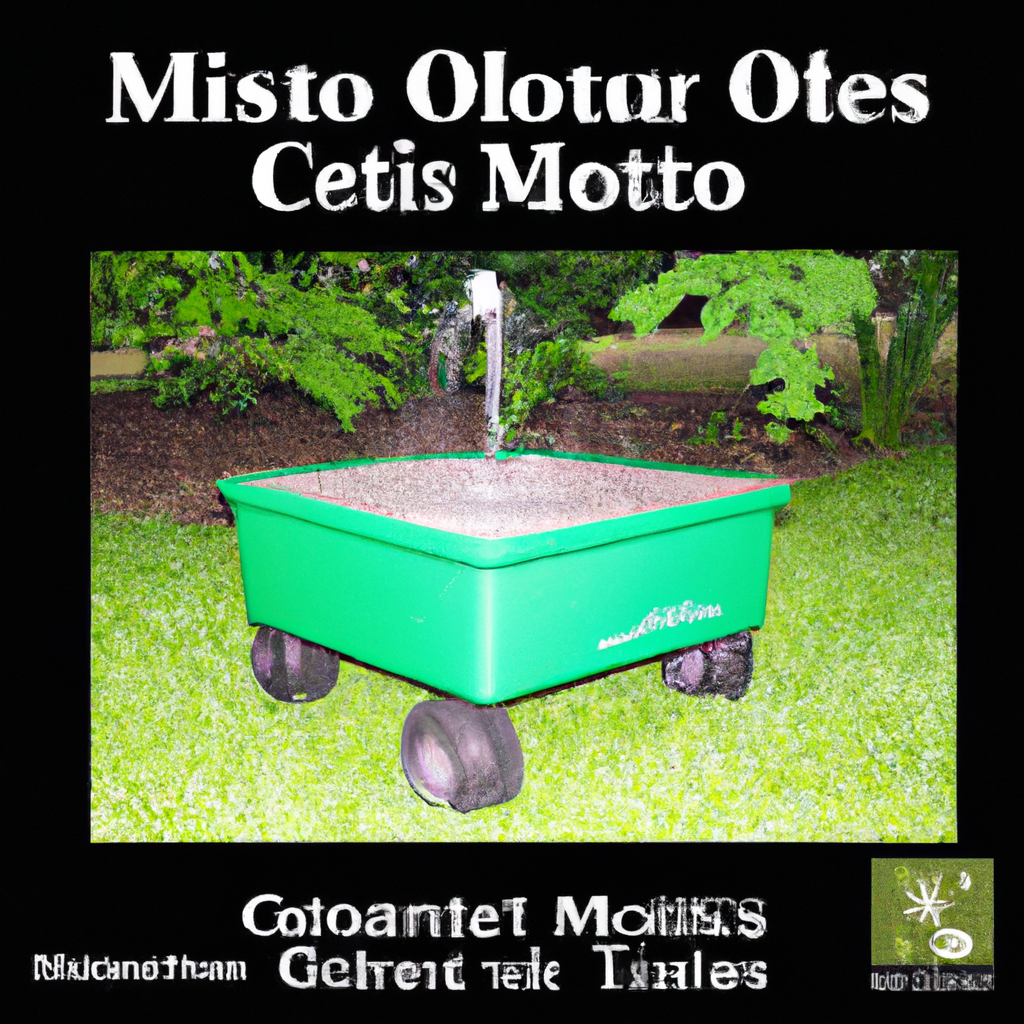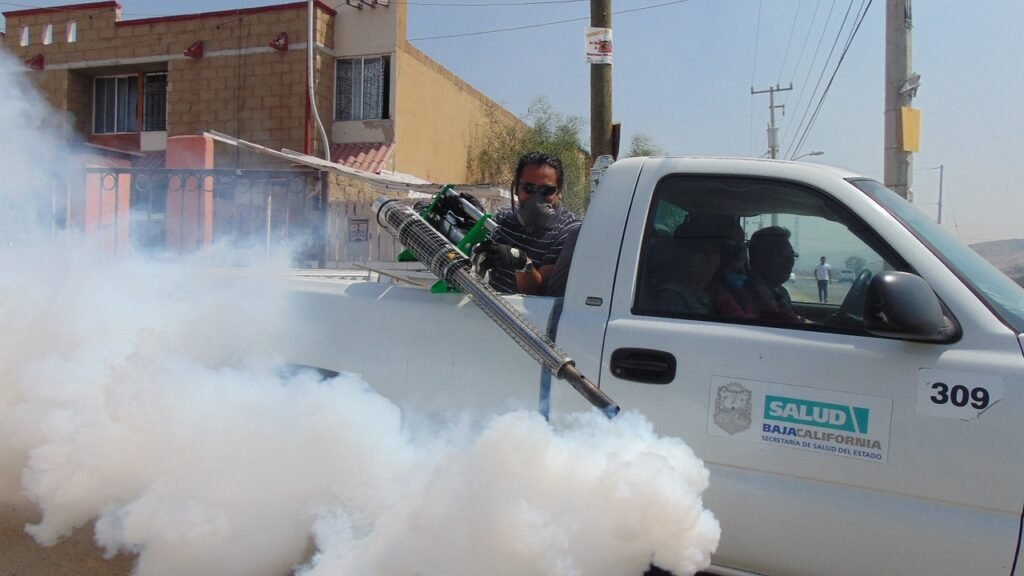Are you tired of constantly swatting away mosquitos every time you step outside in Ohio? Well, fret no more! In this article, we will explore a variety of effective mosquito control methods specifically tailored for Ohio residents. From natural remedies to professional treatments, we have got you covered. Say goodbye to those pesky bloodsuckers and hello to a mosquito-free summer!
Understanding Mosquitoes in Ohio
Mosquitoes are a common annoyance in Ohio, especially during the warmer months. Understanding their habits, lifecycles, and health risks is crucial in implementing effective mosquito control methods. This article aims to provide comprehensive information on various aspects of Ohio mosquito control, including identification, natural and chemical methods, trap usage, protective measures, professional services, educational programs, biological control, research, and the impact of climate change.


Identifying Common Mosquitoes in Ohio
To effectively control mosquitoes, it is essential to identify the species that are prevalent in Ohio. The most common mosquito species found in the state include the Culex species, Aedes mosquitoes, and the Anopheles species. Each species has distinct characteristics, behaviors, and breeding habits, which influence the methods used for controlling their populations. Knowing how to identify these species is the first step in implementing targeted control measures.
Lifecycle of Ohio Mosquitoes
Understanding the lifecycle of mosquitoes is crucial for effective control. Mosquitoes go through four stages: egg, larva, pupa, and adult. The duration of each stage varies depending on the species and environmental conditions. Mosquitoes require standing water for breeding, making it important to eliminate potential breeding sites to interrupt their lifecycle. By disrupting their development at the larval stage, we can significantly reduce the mosquito population in Ohio.
Health Risks Associated with Ohio Mosquitoes
Mosquitoes are not just pesky insects; they pose significant health risks. In Ohio, mosquitoes are known to transmit diseases such as West Nile virus, Zika virus, and Eastern equine encephalitis. These diseases can have severe consequences on human health, ranging from mild flu-like symptoms to neurological disorders and even death. Protecting yourself and your community from mosquitoes is vital to minimize the risk of these diseases.
Natural Methods for Ohio Mosquito Control
Natural mosquito control methods offer eco-friendly alternatives to chemical-based solutions. These methods focus on reducing breeding sites, repelling mosquitoes with certain plants, and introducing natural predators to control their population.
Eliminating Breeding Sites
Eliminating potential breeding sites is a crucial step in reducing mosquito populations. Mosquitoes lay their eggs in standing water, so removing any stagnant water sources around your property, such as flowerpots, buckets, or birdbaths, can help eliminate breeding grounds. Regularly cleaning gutters, repairing leaks, and properly maintaining swimming pools also play a significant role in preventing mosquitoes from reproducing.
Use of Plant Repellents
Certain plants, such as citronella, lemongrass, and lavender, have natural mosquito-repelling properties. Planting these repellent plants in your garden or placing them in pots near seating areas can help deter mosquitoes. Additionally, herbs like basil, rosemary, and mint, when crushed or rubbed on the skin, release scents that repel mosquitoes naturally.
Predator Introduction to Control Mosquito Population
Introducing natural predators into your surroundings is an effective method of mosquito control. Fish species like Gambusia affinis, commonly known as mosquito fish, feed on mosquito larvae, reducing their numbers in bodies of water such as ponds or ditches. Dragonflies, birds, bats, and other insect-eating animals are also natural predators of mosquitoes. Encouraging their presence in your area through suitable habitat creation can help control the mosquito population naturally.


Chemical Methods for Ohio Mosquito Control
While natural methods are preferable, chemical-based methods may be necessary in certain situations when mosquito populations are significantly high or when the risk of disease transmission is elevated. It is important to exercise caution and follow safety guidelines when using chemical methods for mosquito control.
Using Insecticides
Insecticides are commonly used to control mosquito populations. There are two main types: larvicides and adulticides. Larvicides are applied to bodies of water to kill mosquito larvae, while adulticides are used to kill adult mosquitoes. It is crucial to use insecticides specifically labeled for mosquito control and follow the instructions provided by the manufacturer. Additionally, it is essential to consider the potential impact on non-target organisms and the environment and use these chemicals responsibly.
Pesticides and Their Impact
Pesticides, including insecticides, can have unintended consequences on the environment and non-target species. These chemicals may harm beneficial insects, such as bees, butterflies, and other pollinators, disrupt ecosystems, and potentially contaminate water sources. Therefore, it is essential to choose and use pesticides judiciously, following the instructions and precautions specified by the product manufacturer.
Safety Measures When Using Chemicals
When using chemical methods for mosquito control, it is crucial to prioritize safety. Wear protective clothing, including long sleeves, pants, gloves, and goggles, to minimize exposure to the insecticides. It is also important to follow label instructions regarding proper application, storage, and disposal of chemicals. If hiring a professional mosquito control service, ensure they adhere to safety standards and have the necessary certifications to handle chemical-based control methods safely.
Using Mosquito Traps in Ohio
Mosquito traps can be an effective tool in reducing mosquito populations in Ohio. They work by attracting and trapping mosquitoes, preventing them from bothering you and breeding further. Understanding the different types of traps, proper placement, and maintenance is essential for their effectiveness.
Types of Mosquito Traps
There are several types of mosquito traps available in the market, each using different mechanisms to attract and trap mosquitoes. CO2-based traps, which imitate the human breath, are popular and effective in capturing mosquitoes. Other traps use ultraviolet light, heat, or chemical attractants to lure and trap mosquitoes. Understanding the advantages and limitations of each trap type can help you choose the most suitable option for your needs.
Effective Placement of Mosquito Traps
Proper placement of mosquito traps is crucial for maximizing their effectiveness. Traps should be strategically positioned in areas where mosquitoes are abundant, such as near standing water sources, shady areas, or outdoor gathering spaces. Placing the traps away from areas where people congregate can help draw mosquitoes away from human activity.
Maintaining and Cleaning Mosquito Traps
To ensure the continued effectiveness of mosquito traps, regular maintenance and cleaning are necessary. Emptying and cleaning the traps regularly, following the manufacturer’s instructions, prevent the buildup of debris and dead mosquitoes, which can reduce trap efficiency. Additionally, replacing attractants, such as CO2 cartridges or chemical lures, as recommended by the manufacturer, ensures the traps remain attractive to mosquitoes.


Protective Measures Against Mosquitoes in Ohio
Protecting yourself and your loved ones from mosquito bites is crucial to minimize the risk of mosquito-borne diseases. Implementing protective measures can significantly reduce exposure to mosquitoes and their bites.
Wearing Protective Clothing
Wearing long sleeves, long pants, and socks can prevent mosquito bites. Light-colored clothing is also recommended, as mosquitoes are attracted to dark colors. Additionally, consider treating your clothing with permethrin, an insecticide that repels mosquitoes and ticks.
Using Mosquito Repellents
Mosquito repellents are an effective way to deter mosquitoes from biting. Choose repellents containing active ingredients such as DEET, picaridin, or oil of lemon eucalyptus (OLE), as they have been proven effective against mosquitoes. Apply the repellents according to the instructions on the product label, and reapply as necessary.
Installing Mosquito Nets
Installing mosquito nets over beds or around outdoor seating areas provides an additional physical barrier against mosquitoes. Ensure the nets have fine mesh to prevent mosquitoes from entering. This is particularly beneficial during nighttime when mosquitoes are most active.
Professional Mosquito Control Services in Ohio
In cases where the mosquito population is overwhelming or natural and DIY methods are ineffective, hiring professional mosquito control services can be a viable option. Professional services have the expertise, equipment, and resources to effectively control mosquito populations.
When to Hire Professionals
Consider hiring professional mosquito control services if the mosquito population in your area is causing significant distress, posing health risks, or if you have exhausted other control methods without success. Professionals can assess the situation, devise suitable control strategies, and implement them efficiently.
Choosing a Reliable Mosquito Control Company
When choosing a mosquito control company, look for reputable providers that are licensed, insured, and experienced in mosquito control. They should follow integrated pest management practices, which prioritize environmentally-friendly and sustainable methods. Seek recommendations from friends, neighbors, or local health departments to ensure you select a reliable and trustworthy company.
Things to Expect from Mosquito Control Professionals
A professional mosquito control service should conduct a thorough inspection of your property, identify potential breeding sites, and develop a customized control plan. They may employ various methods, including chemical treatments, larvicide applications, and adult mosquito control techniques. Additionally, they should provide advice on preventive measures and ongoing monitoring to ensure long-term effectiveness.


Educational Programs and Partnerships
Public health education and community engagement play crucial roles in successful mosquito control. Establishing educational programs and partnerships can increase awareness, encourage participation, and facilitate a coordinated effort against mosquitoes.
Public Health Education on Mosquito Control
Public health departments and organizations should conduct educational programs to raise awareness about mosquito-borne diseases, prevention methods, and available control strategies. These programs can be conducted in schools, community centers, and public events to reach a broader audience and effectively disseminate information.
Community Participation in Mosquito Control
Engaging the community in mosquito control efforts can significantly enhance the effectiveness and sustainability of control measures. Encourage residents to eliminate breeding sites, use natural repellents, and implement preventive measures in their properties. Community-based initiatives, such as cleanup campaigns and neighborhood watch programs, can foster a sense of shared responsibility and empower individuals to take proactive steps against mosquitoes.
Government Initiatives for Mosquito Control
Government agencies at the local, state, and federal levels should invest in mosquito control programs, research, and partnerships. They can provide funding and support for educational initiatives, research projects, and integrated pest management strategies. Collaborating with public health departments, universities, non-profit organizations, and other stakeholders can facilitate a comprehensive approach to mosquito control.
Use of Biological Control Methods
Biological control methods utilize living organisms to manage mosquito populations naturally. Implementing these methods can mitigate the use of chemical interventions while promoting a balanced ecosystem.
Introduction to Biological Control
Biological control involves introducing natural enemies or organisms that prey on mosquitoes or disrupt their lifecycle. This includes the use of larvivorous fish, bacteria, fungi, and other natural predators. These organisms target mosquito larvae or adults, reducing their numbers and preventing population growth.
Using Larvivorous Fish
Larvivorous fish, such as Gambusia affinis (mosquito fish) and certain species of minnows, feed on mosquito larvae. Introducing these fish into bodies of water, such as ponds or lakes, can help control the mosquito population naturally. However, it is crucial to use native fish species and ensure they are compatible with the local ecosystem.
Use of Bacteria and Fungi
Certain bacteria and fungi, such as Bacillus thuringiensis and Bacillus sphaericus, produce toxins that specifically target mosquito larvae. These biological agents can be applied to bodies of water, where they infect and kill mosquito larvae without harming other organisms. Utilizing these bacteria and fungi can be an effective and environmentally-friendly approach to mosquito control.


Current Research on Ohio Mosquito Control
Continuous research and development are vital in improving mosquito control methods and adapting to changing circumstances. Researchers in Ohio and around the world are actively studying various aspects of mosquito control to enhance effectiveness and minimize potential risks.
Latest Developments in Mosquito Control Techniques
Researchers are exploring innovative methods of mosquito control, such as genetic modifications to reduce mosquito populations or utilizing biological control agents. Advances in technology, including the use of drones for targeted insecticide applications or trap monitoring, are also being researched to improve the efficiency of control techniques.
Effectiveness of New Mosquito Control Methods
Scientific studies and field trials are conducted to evaluate the effectiveness of new mosquito control methods. These studies assess the impact on mosquito populations, non-target organisms, and overall ecosystem health. By understanding the effectiveness and potential risks associated with new methods, researchers can devise safer and more efficient mosquito control strategies.
Funding and Support for Mosquito Control Research
Public and private funding plays a crucial role in supporting mosquito control research. Government agencies, non-profit organizations, and philanthropic foundations provide financial support for research projects investigating mosquito behavior, novel control methods, and disease prevention. This funding enables researchers to carry out studies, gather data, and develop evidence-based control strategies.
Impact of Climate Change on Mosquitoes in Ohio
Climate change has the potential to influence mosquito populations and the diseases they transmit. Understanding these influences and adapting mosquito control methods accordingly is crucial for effective management in a changing climate.
Climate Factors Influencing Mosquito Populations
Climate factors, such as temperature, precipitation, and humidity, influence mosquito development, reproduction, and survival. Rising temperatures and altered rainfall patterns can create favorable conditions for mosquito breeding, leading to increased populations. It is important to monitor and understand these climate factors to anticipate changes in mosquito distribution and abundance.
Climate Change and Mosquito-Borne Diseases
Climate change can potentially affect the geographic range and prevalence of mosquito-borne diseases. Changes in temperature and rainfall patterns can expand the range of mosquitoes and alter their ability to transmit diseases. Understanding these changes and their potential impacts on human health is crucial for timely disease surveillance, prevention, and control.
Adapting Mosquito Control Methods to Climate Change
Adapting mosquito control methods to climate change involves adjusting strategies, timings, and intensity based on changing environmental conditions. This may involve revising surveillance programs, altering treatment schedules, and implementing proactive measures to prevent the establishment of new mosquito species. Collaborating with climate scientists, public health agencies, and researchers can help develop adaptive strategies that address the effects of climate change on mosquito populations.
In conclusion, effective mosquito control in Ohio requires a comprehensive approach that encompasses identification, understanding lifecycles and health risks, and implementing various control methods. By utilizing natural methods, chemical interventions when necessary, mosquito traps, protective measures, professional services, educational programs, biological control, and research advancements, we can collectively reduce mosquito populations and minimize the risks they pose to public health. Additionally, adapting control strategies to climate change ensures the continued effectiveness of mosquito control efforts in Ohio, even in the face of changing environmental conditions.
Your Expert in Animal Control and Extermination. Trust our experience for humane, effective pest management, protecting your property and ensuring peace of mind with Michael S.





